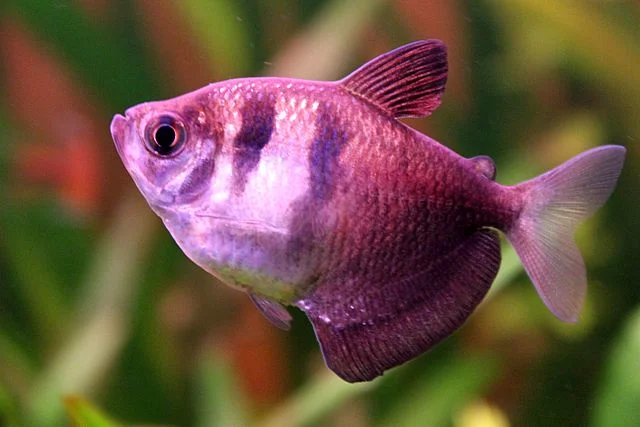
The cultivation of fish fry is a crucial step in the aquaculture industry, and understanding the factors that influence their growth and survival rate is essential for optimal production.
A recent study published in the SSRN journal investigated the effect of different plastic bowl colors on the growth and survival rate of Nile tilapia fry, Oreochromis niloticus. The study aimed to compare the performance of the fry in white, red, black, green, and blue bowls over a 10-week period.
The impact of the culture medium color on tilapia growth
The choice of the culture medium, including its color, can significantly influence the profitability of tilapia farming. While traditional methods often involve the construction of ponds or tanks, the use of plastic containers offers a more affordable and accessible option for small-scale fish farmers.
By understanding the impact of the culture medium color on tilapia growth, fish farmers can optimize their production practices and potentially increase their profitability.
The importance of the culture container
The choice of the culture container, including its type and color, plays a crucial role in the profitability of tilapia farming. Research has shown that the color of the culture medium can influence fish growth and survival rates. By selecting the optimal color, fish farmers can potentially improve their yields and reduce costs.
The experiment
The experiment involved placing tilapia fry in five different colored plastic containers (white, red, black, green, and blue) and monitoring their development over a 10-week period.
Researchers from the University of Ibadan and the University of Agriculture Makurdi stocked 20 fry per bowl, with an average weight of 0.08 g and a body length of 0.53 cm, in triplicate for each color. The fry were fed a diet containing 45% crude protein at 5% of their body weight, twice a day, between 8:00 a.m. and 9:00 a.m., and between 4:00 p.m. and 5:00 p.m.
Key findings
The study’s results were intriguing. While the black containers consistently produced the largest fish, they also exhibited the lowest survival rate, at 52.7%.
Stay Always Informed
Join our communities to instantly receive the most important news, reports, and analysis from the aquaculture industry.
Conversely, the white containers, although resulting in smaller fish, showed the highest survival rate, at 91.3%. Interestingly, the fish in white containers seemed to blend into their surroundings, suggesting that their camouflage may have hindered their growth.
Green containers, on the other hand, proved to be a balanced option. They produced fish with a good condition factor and a respectable survival rate of 89.40%. This finding suggests that green bowls may provide an optimal environment for the growth of tilapia fry.
Impact on tilapia fish farming
The findings suggest that the choice of plastic container color can have a significant impact on the growth and survival rate of Oreochromis niloticus fry. The study’s results provide valuable insights for aquaculture professionals and researchers, highlighting the importance of considering the color of the rearing environment when optimizing fish production.
- The green container demonstrated the best condition factor, with an 89.4% survival rate.
- The choice of plastic container color can significantly impact the growth and survival rate of the fry.
Conclusion
The overall conclusion of the study is that plastic bowls can be a viable and cost-effective option for the cultivation of tilapia fry. By selecting the appropriate bowl color, fish farmers can potentially maximize both growth and survival rates.
Further research is needed to explore the underlying reasons for the differences in growth and survival observed in bowls of different colors. Additionally, the study contributes to improving tilapia fry production practices.
Contact
Amesa V.S.
University of Ibadan, Ibadan, Oyo State, Nigeria.
Email: amesavictor@gmail.com
Reference (open access)
Satimehin, Folajimi Promise Daniel and Odo, Benedict Ugonna and Amesa, Victor Sokoeyame. 2024. Comparative Assessment of Growth Performance And Survival Rate of Oreochromis Niloticus Fry Reared in Different Colors of Culture Medium (Plastic Bowls). Available at SSRN: https://ssrn.com/abstract=4980281 or http://dx.doi.org/10.2139/ssrn.4980281
Editor at the digital magazine AquaHoy. He holds a degree in Aquaculture Biology from the National University of Santa (UNS) and a Master’s degree in Science and Innovation Management from the Polytechnic University of Valencia, with postgraduate diplomas in Business Innovation and Innovation Management. He possesses extensive experience in the aquaculture and fisheries sector, having led the Fisheries Innovation Unit of the National Program for Innovation in Fisheries and Aquaculture (PNIPA). He has served as a senior consultant in technology watch, an innovation project formulator and advisor, and a lecturer at UNS. He is a member of the Peruvian College of Biologists and was recognized by the World Aquaculture Society (WAS) in 2016 for his contribution to aquaculture.




